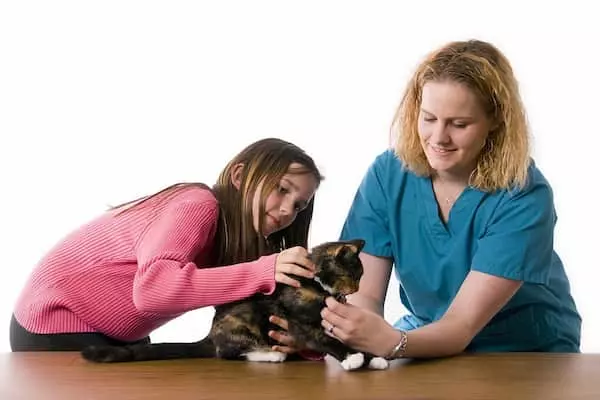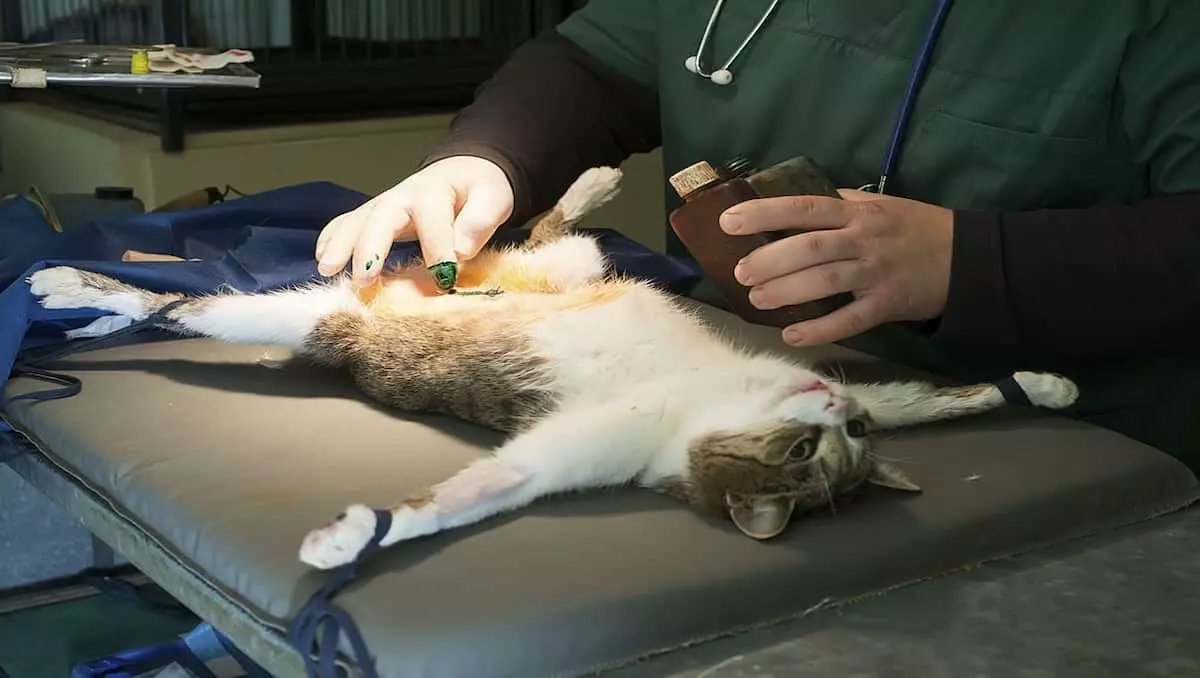how late can you spay a cat?
The majority of the time the decision to neuter or spay your cat is taken at an early age. the American Humane Society believes that all cats (and dogs) adopted from public or private animal control and care facilities are required to be neutered or spayed. There is some disagreement among veterinarians regarding when is the most appropriate moment to perform the procedure. Typically, three options are suggested
Spay/neuter in the early stages of development or for children carried out between six and 8 weeks old
Spay/neuter standard, performed at the age of five to six months age
In adulthood, cats who were not spayed/neutered due to being wild strays breeding animals, or in any other way.
It was a standard routine to sterilize or spay cats at a young age as six to eight weeks old, but nowadays, the standard procedures for spaying and neutering are done at the time that the kitten is between 5 and 6 months old.
If the cat’s health is good the procedures can be done at any point throughout the life of your cat However, the sooner the procedure is performed the lower the chance that your cat will suffer from negative side effects due to being sexually healthy.
READ MORE: Should You Spay a Pregnant Cat?

What are the advantages of neutering or spaying your cat?
With an idea of the time when your cat is sterilized, it’s crucial to emphasize the advantages associated with the treatment. While you might wish for your kitten to eventually enjoy the joys of motherhood or you are worried that your cat’s male counterpart will feel less masculine after being neutered, this procedure can provide a number of benefits for your pet’s health and behavior which can allow your kitten to live a long and healthy life.
Female cats that have been spayed before the first time have a cycle, for example having a lower chance for malignant mammary cancer later in life. This is the most prevalent form of cancer found in cats of 10 years age or older.
Also, it reduces the likelihood of your cat suffering from urinary tract infections and cancers of the reproductive organs. Also, it reduces the chance of issues that could arise when a baby is born and pregnant. Spaying female cats can also stop heat cycles, which may last for months, and stop crying, yowling, and other unpredictable behaviors caused by heat cycles in cats.
Male cats are the most affected, and the benefits of neutering for male cats are mostly behavioral. But, it can reduce the risk of developing testicular cancer as well as other prostate issues later on in the course.
Neutering your cat’s male will minimize his unwanted behavior (such as wandering around or looking for an animal companion if you have pets that are outdoors) as well as marking the inside of your house, or fights with males.
Another reason that spay/neuter programs are to limit the overpopulation of pets. Experts estimate that anywhere between 60 to 100 million homeless and wild cats reside throughout the U.S., all of which require water, food as well as shelter to safeguard them from threats.
Overpopulation of pets occurs when owners are unable to afford or maintain their pets and there aren’t enough places to keep unwanted animals.
The animals end up living at the bottom of the street or in different animal shelters and reproducing with no chance of ever having a permanent home. Every year, close to 1 million animals are put to death in shelters across America.
The best method to stop this from happening in the near future is to cut down on the number of animals giving birth by spaying or neutering your cat.
READ MORE: Can Cats Eat Lettuce? Is Lettuce Safe For Cats?
What are the average costs for spaying or neutering your cat?

Spay or neuter procedures for cats vary based on several variables, but the most significant is the place you get the procedure. (Be certain to speak with your veterinarian first!)
Although private vets generally range from $200 to $400, they will usually take the blood of your pet prior to surgery to ensure that anesthesia is not harmful to your cat.
They also offer post-operative pain medications. If your budget isn’t enough then you may consider the lowest cost spay/neuter clinic.
The majority of these clinics are run by non-profits that offer vet clinics carried out by licensed vets, and typically are less expensive. In any case, the vet who treats your pet will make sure to talk about the benefits and risks of neutering and spaying so you are able to eliminate any fears prior to the procedure.
A factor that can affect the cost of a male cat’s spay or neuter is whether she’s currently pregnant, which can result in a more complex, expensive procedure.
The cost of neutering or spaying your cat is significantly lower than caring for litter or the cost of health issues that could arise without the procedure.
Many non-profit organizations provide spay and neuter procedures for those who meet the criteria.
The ASPCA provides a list of programs that are low-cost across the nation as well as their own free services for those who meet the criteria.
READ MORE: Why do cats snore-and is snoring and sneezing)g in cats normal?
How can you assist your cat prior to and following surgery?
The majority of vets recommend for your cat not eat or drink for a minimum of 12 hours prior to surgery to minimize the chance to vomit during procedures.
If your cat is outdoors or doesn’t like your cat’s pet carrier you should consider moving them inside so it is easy to get them to the vet prior to the procedure.
spay cats typically take 30-45 minutes to one hour, based on their age and the place she’s in their cycle as well as the skill of the surgeon. Likewise, easy cat neutering can be performed in as little as five minutes. Cat neuters that are cryptorchids will take longer and could cost more.
Surgery is painful, therefore pain medication must be taken to your cat. If you bring your pet to their home, they’ll be recovering from the surgery which is why they’ll require you to keep them in check for a few days following the procedure.
Once you’re home When you get home, make sure:
- Make sure your cat has an area to relax in indoors, away from other pets.
- Stop your cat from jumping and running for at least two weeks following surgery, or for as the veterinarian suggests.
- Keep your cat away from licking at the area of the cut which could lead to an infection. A cone could be placed on their head to stop them from licking.
- Use all pain medication according to the prescription no matter if the cat appears “fine”.
- Be sure to avoid bathing your pet for at most 14 days following surgery.
- Examine the site of the cut regularly to verify that healing is occurring. If you notice swelling, redness, and discharge or you notice that your cat is sick or is being sick in any way contact your veterinarian.
can you spay a cat in heat?
Your cat will mate with a male if she is in heat. She will often go to great lengths in order to find males to mate with. To avoid unwanted pregnancy, a cat in heat should always be kept indoors.
It can be difficult to live with a cat that displays the signs of estrus. In the heat, cats tend to shout excessively. Cats in heat may try to flee their homes obsessively. They may even mark their homes with urine.
You may want to ask your vet if you are unable to deal with the behavior for more than a week. It is possible to spay a cat while she is still in heat, even though it is not ideal. There are however some drawbacks.
The blood vessels that supply the reproductive organs of cats become clogged with blood when they are heated. Tissues may be more susceptible to being torn.
This can make the surgery more complex and longer than a routine spay. Because of the additional time and supplies required, it will be more costly. Although there is a slight risk to the cat, some vets will not perform surgery on a cat that is in heat.
If your cat has already started her first heat before spay surgery, it is best to consult your vet immediately. Postponing the surgery may make it more practical for your cat and you.
If your cat’s chances of escaping or mating are high, it might be worth having the spay performed while your cat is still warm. Ask your veterinarian for guidance.
Timing the Spay Surgery
It’s crucial to plan ahead if your cat is already in heat. Remember that cats will continue going into heat until they mate. 2 This could mean that a new heat cycle could start just days or weeks after the previous one.
It can be difficult to find the right window. Last-minute surgeries may not be possible for your vet. Discuss with your vet the best time for the spay. You should notify your vet if you notice any signs of heat within a few days before the scheduled surgery.

